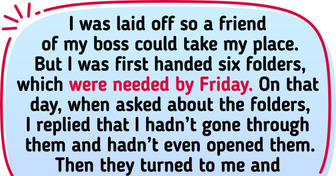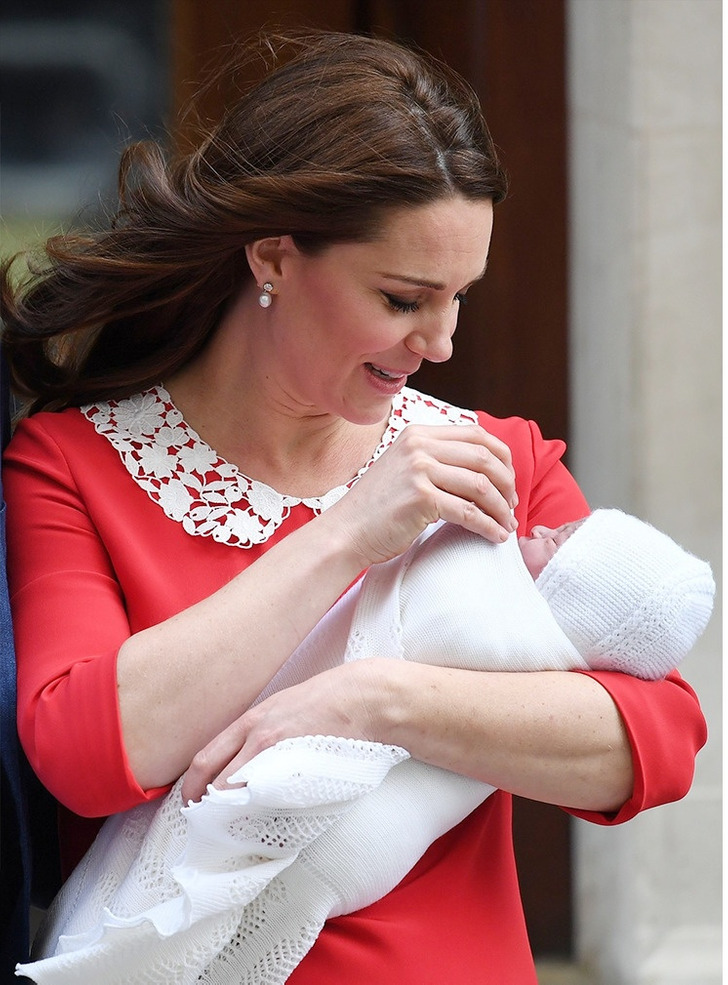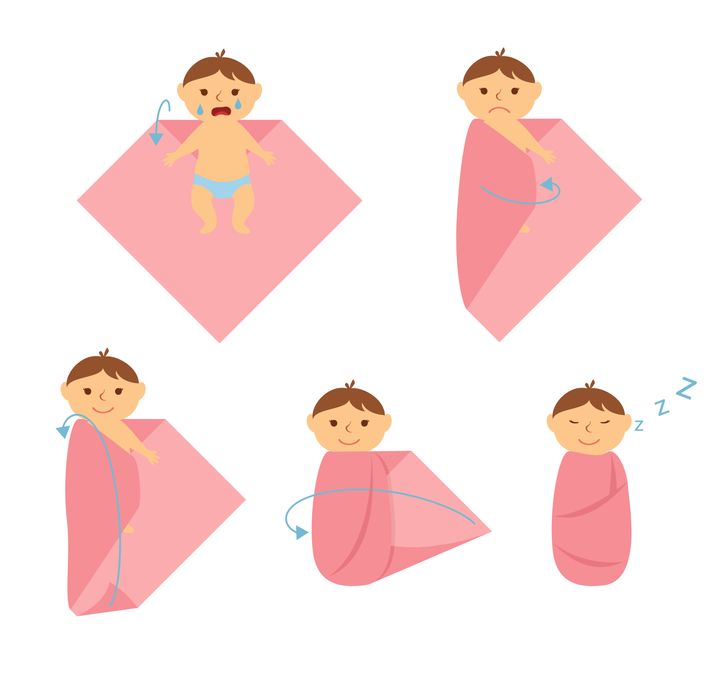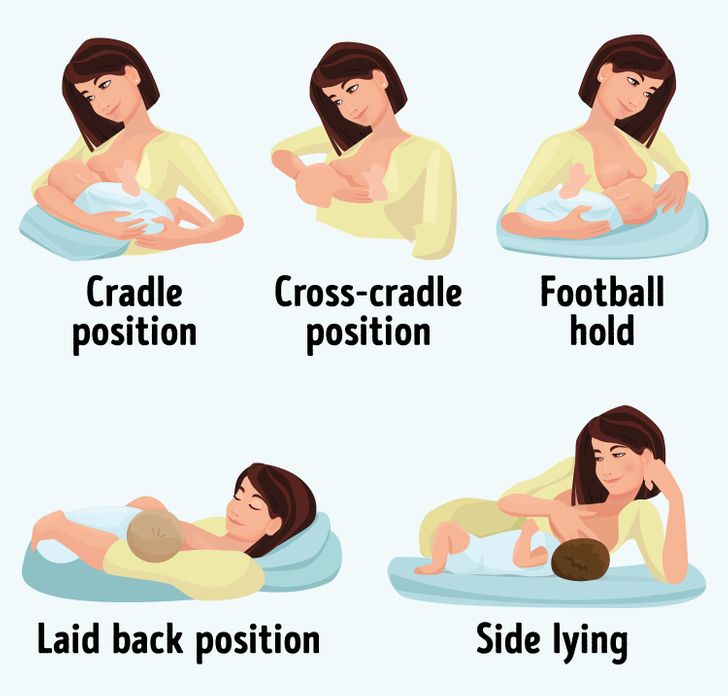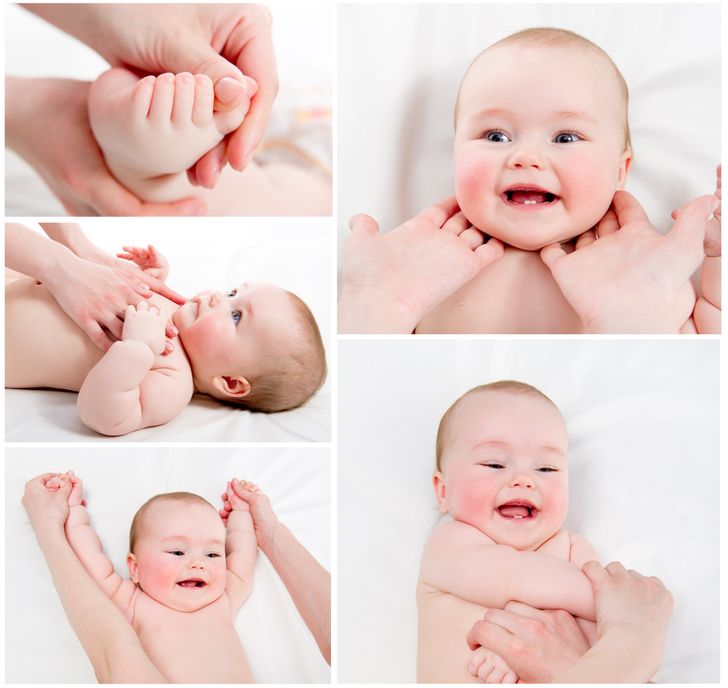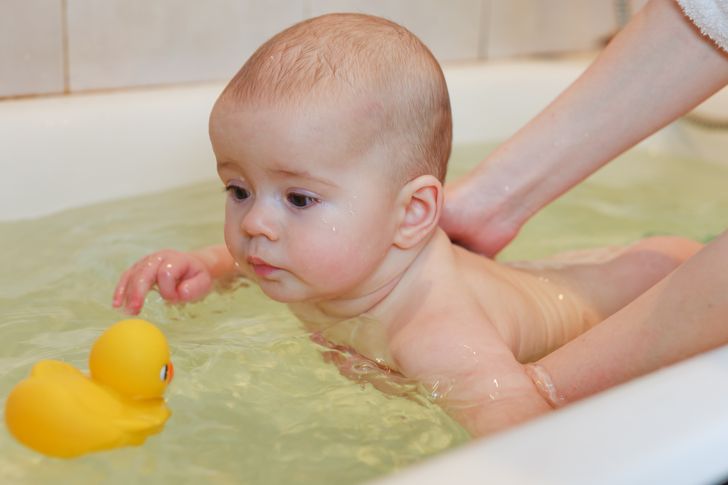If you've had a C-section having the baby across your belly for breastfeeding can be uncomfortable. An alternative position is to sit in a recliner with the footrest up, your knees up and the baby straddling one of your knees, facing you. Then baby can lean in and nurse without putting pressure on your abdomen.
10 Baby Care Skills Every New Parent Should Master
As much as a newborn brings joy, it brings an equal amount of responsibility as well. New parents usually go through a bumpy ride when taking care of a baby, which involves issues like lack of sleep, soothing the baby, and feeding. Be ready for drastic changes in your lifestyle and remember that the first giggle of your little one makes the struggles you go through worth it.
We did some research at Bright Side which led us to put together a list of things that can be beneficial for new parents.
1. How to hold a baby
When our babies are first handed over to us, most of us don’t quite know how to hold them yet. There is always that fear, especially for first time parents, that you’re not holding this tiny, little baby correctly. And it is very important that you handle them with care.
The neck of the child is the most delicate and when picking them up you should keep your hand under their head. Since the baby can’t physically support their head by themselves, the task is yours to make sure you are always holding the baby right — one hand under the head and the other under the hips.
You also have to be careful of the soft spots on the head of the newborn. Touching these should be avoided as much as possible. In order to provide the utmost protection and make your baby feel safe, always keep them close to your chest.
2. How mothers need to take care of themselves in the first 30 days
The first thirty days are the most crucial. As much as you think you are going through, so is the baby who is seeing the world for the very first time. At this time, it is important that the mother takes good care of herself so that she can take care of the child in the best possible way.
It is advised for new moms to eat well and eat right, especially if they are breastfeeding. Sleep is another big issue that new mothers face. It is usually advised that they sleep when their child sleeps. This will ensure that they are getting enough sleep.
3. How to swaddle a baby
Swaddling correctly is the key to a calm and soothed baby. First, fold the sheet in a diamond shape. Fold the top corner down and put the baby on the sheet. Pull one side of the sheet across the baby’s chest, tucking the corner under the arm. Now take the bottom of the sheet, fold it over the feet and tuck it behind the shoulders.
Then, pull the remaining side of the sheet across the baby’s chest and tuck it underneath the baby. Once wrapped correctly, hold the baby close to your chest. Since the baby is now cozy enough, they should fall asleep quicker.
4. How to breastfeed a baby
Breastfeeding is very important, especially in the first few days. It can be an obstacle for the mother and sometimes for the baby as well. Since milk is the only source of food and nutrition for the baby in their first days of life, it is important to be adamant in asking questions about technique until you learn how to breastfeed successfully.
As simple as it may sound, it can sometimes be complicated. New mothers can face a lot of issues like poor latch, low milk supply, an over-demanding baby, and breast infections.
There are many types of holds you can use to breastfeed (see the graphic above) and you should choose whichever is most comfortable for you and the baby. If you have a sleepy newborn that tends to get tired while sucking and fall asleep, we have a tip for you, just tickle the baby’s feet during breastfeeding sessions to keep them awake. This will make sure they don’t fall asleep with an empty stomach.
5. How to burp and administer CPR to a baby
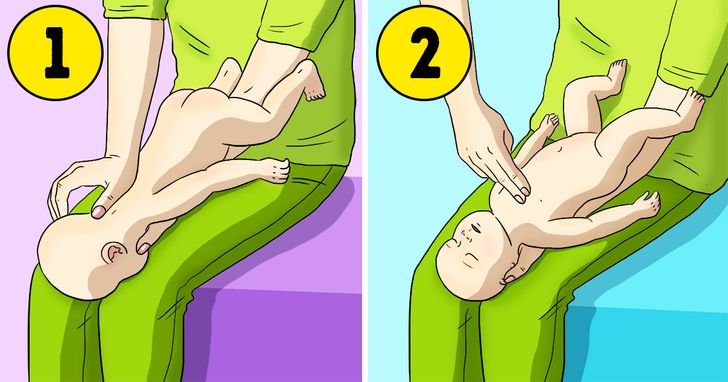
Burping is essential to keep the baby comfortable, especially in the first few months. A comfortable baby will in turn eat well and sleep well too. To burp a baby, hold them on your chest in a way that their chin rests on your shoulder. Don’t forget to support their head and shoulders. Now gently rub or pat their back until they burp.
Another method to burp a baby is face down on your lap. While the baby lies on your legs, support their chin and jaw with your hands making sure to hold their head a little higher, so that blood doesn’t rush toward the head. Now, rub or pat the back gently to burp the child.
In an emergency situation if you sense that the baby is choking, you can also lay the baby in the same face down position you used for burping. The right method for responding to this is to first do chest thrusts — 5 times using only 2 fingers. Then, back blows until the baby starts coughing. Remember that the baby is small and that you don’t want to pat or thrust too forcefully.
Coughing is an indicator that the object has shifted from the air way.
6. How to massage a baby
Massage is generally done for newborns to make their bones and muscles stronger. The first rule is to not do it before or after a feed. To give a successful baby massage, follow these steps: lay your baby on a towel or sheet on a comfortable surface, like a bed, and start massaging with some vegetable-based oil. Start with the legs, followed by the arms, then the chest, and finally, the baby’s back.
Massaging not only soothes but strengthens the baby as well. An added bonus is the bond that is created with the baby during these daily massages.
7. How to bathe a baby
Any new parent is nervous about bathing their baby. There is always some level of apprehension when it comes to bathing a newborn. It is important to note that newborns require just a sponge bath during the first week of their life. It is suggested to wait until after the umbilical cord dries up and falls off on its own to start with the occasional tub bath.
Remember, it’s just an occasional tub bath, which means you don’t need to bathe the baby daily. Also, check the water temperature before putting the baby in and never leave the baby unattended.
8. How to get the baby to sleep
The first few days are particularly tough when it comes to baby’s sleeping patterns.
Parents generally struggle to put the baby to sleep during this time. Coming out of a dark cozy womb, the first step toward making the baby aware of the new world and how people sleep here is the pattern of light. Try to keep the room lit up during day and dim the lights at night. This will help the baby understand the difference between night and day.
Your ’almost sleeping’ baby might look cute to you, and you might have an urge to kiss them or talk to them. But, that’s not a good decision. This can signal to the child that you are ready to play with them and in turn wake them up. Another expert tip is to be patient until the child gets fully sleep-trained.
9. How to change diapers
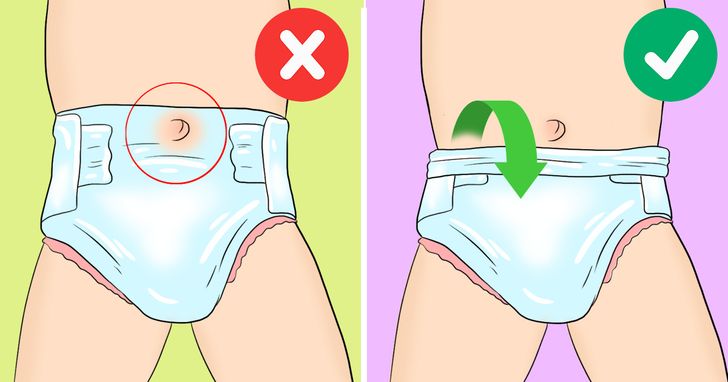
Diaper changing is not rocket science but can seem so at first. Parents are generally awkward and a little afraid of this task in the beginning. The first and foremost thing that you need to keep in mind is to diaper a baby correctly until the umbilical cord has dried and fallen off.
Never fasten a diaper over the umbilical cord clip but always below it. There should be no added pressure put on that area.
There are a few other things that you should always keep in mind. Always wipe a soiled diaper from front to back, especially for baby girls, to avoid any infection.
Always make sure to pat the area dry before putting on a fresh diaper. If the baby has a diaper rash, take extra precautions like checking it often, so that a full or soiled diaper doesn’t intensify the rash. You should keep rash ointment handy at all times, so that even a small rash doesn’t get worse. Also avoid any scented soap or diapers until the rash is fully gone.
10. How to bond with the baby
Your gentle skin-to-skin touch is all it takes and this habit should start as soon as the baby is born. Another important thing is to look into the baby’s eyes and talk to them. It might seem a little weird that you are talking to a small baby who might not even understand what you are saying, but it truly works.
Because the vision of a baby is not great (only 30 cm), get closer to them, smile, and talk.
Sing them lullabies, give them a massage, and utilize alone time with your baby. The bonding created at this tender age goes a long way.
Now that you have handy information about all the important things to be kept in mind to care for a baby, make sure to share it with your friends and family who have recently become parents.
Comments
Related Reads
13 Times an Ordinary Day Turned Into a Scene From a Romantic Movie
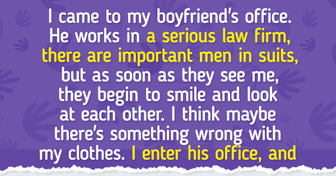
12 Exes Who Made Life Seem Like a Dramatic Episode From a Soap Opera
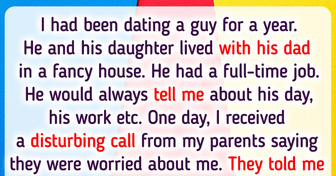
17 People Revealed What Became the Last Straw in Their Relationship
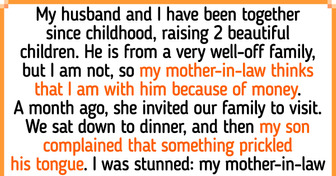
My Future MIL Insulted Me in Front of Everyone—But I Made Her Regret It

12 People Who Learned the Truth When It Was Too Late

12 Wild Stories That Prove Cheating Isn’t For the Faint-Hearted

24 Stories That Prove Family Bonds Are Like No Other

14 People Whose Pranks Had an Unexpected Finale
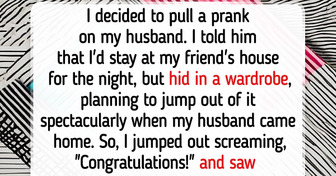
I Banned My MIL from Seeing My Baby Because She Refuses to Babysit

15 Real-Life Stories With Hard-to-Believe Plot Twists
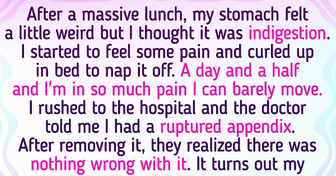
15+ Times Children Showed Their Spontaneity in Unforeseen Ways
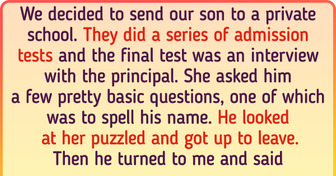
20 Employees Share How They Left a Lousy Job Without Looking Back
